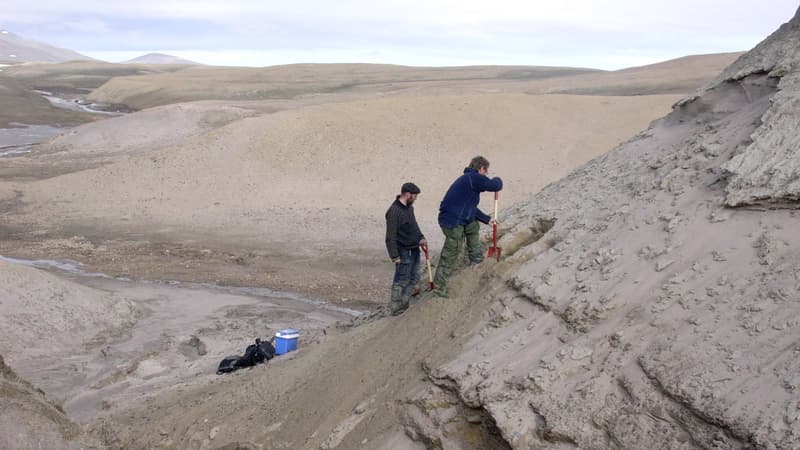Two-million-year-old DNA, the oldest ever extracted, has been unearthed from Ice Age sediments in Greenland, a discovery that opens a new chapter for paleogenetics, scientists said Wednesday.
“DNA can survive for 2 million years, which is twice as long as previously found DNA,” says Mikkel Winther Pedersen, one of the lead authors of the study published in the scientific journal Nature.
Identifiés dans des sediments, les différents fragments d’ADN proviennent “de la partie la plus septentrionale du Greenland, appelée Cap Copenhagen, et (sont) issus d’un environnement que nous ne voyons nulle part sur Terre aujourd’hui”, dit- The.
They were so well preserved because they were frozen and found in little-exploited areas, continues the professor at the University of Copenhagen.
“Rivers (carried) minerals and organic matter into the marine environment, where these terrestrial sediments were deposited. And then, at some point, about 2 million years ago, this underwater landmass rose up and became part of the North Greenland”. he says.
Cape Copenhagen is today an arctic desert. Various types of deposits, including excellently preserved plant and insect fossils, had already been discovered there. The researchers had not sought to establish the DNA of the items found and there was very little information on the possible presence of animals.
16 years of research
The researchers’ work, which began in 2006, has made it possible to paint a portrait of the region 2 million years ago.
“We had this forest environment with mastodons, reindeer and hares and with a large number of different plant species. We found 102 different plant taxa,” notes Mikkel Winther Pedersen.
According to him, the presence of the mastodon is particularly notable because it had never been noticed so far north before.
The researchers reflect, therefore, on the adaptability of the species because two million years ago Greenland -“green land” in Danish- experienced temperatures between 11 and 17 degrees higher than today, but at these latitudes the sun does not set on the summer months nor does it rise in the winter.
“We don’t see this association of species anywhere else on Earth today,” said the specialist in paleoecology. This “makes you think about the plasticity of species: how species are actually able to adapt to a climate, to different kinds of climates, might be different than we previously thought.”
State of the art of technology
It was thanks to innovative technology that the researchers discovered that the 41 fragments studied are a million years older than the previous record of DNA taken from a Siberian mammoth bone.
It was necessary to determine if the DNA was hidden in the clay and quartz and then that it could be separated from the sediment for examination.
The method used “provides a fundamental understanding of why minerals or sediments can preserve DNA…it’s a Pandora’s box that we are about to open,” says Karina Sand, who heads the geobiology group at the University of Copenhagen and participated in the study. .
For Mikkel Winther Pedersen, with this discovery “we break the barrier of what we thought we could achieve in terms of genetic studies.”
“For a long time it was thought that a million years was the survival limit of DNA, but today we are double that. And obviously that drives us to search for sites,” he adds.
“There are several different sites around the world that have geological deposits that go back that far. And even further back in time”, says the researcher.
Source: BFM TV


